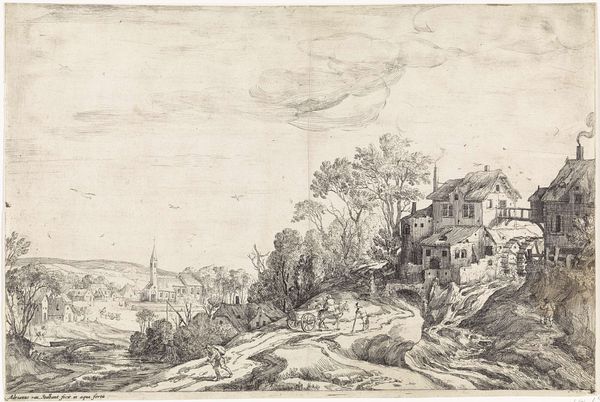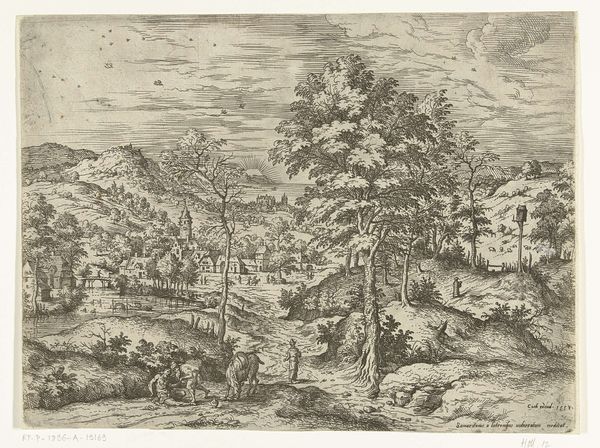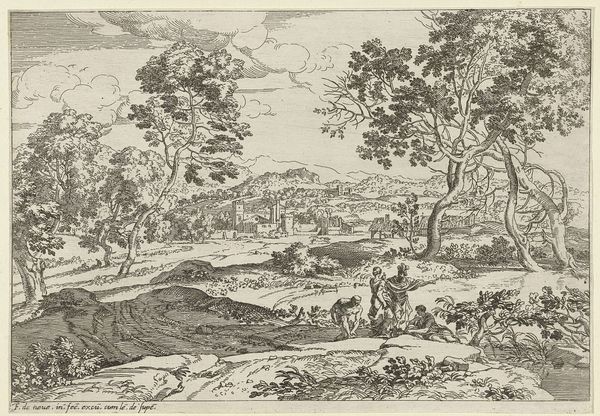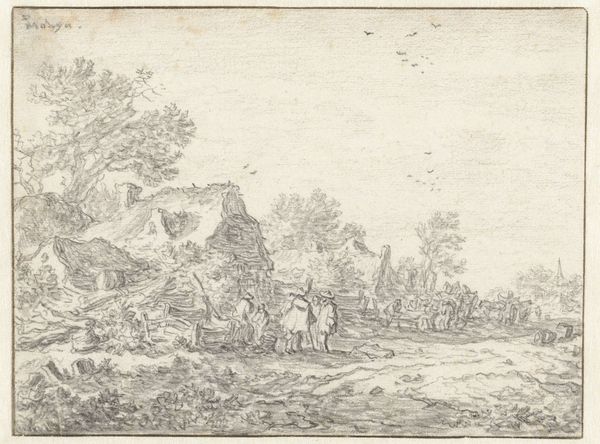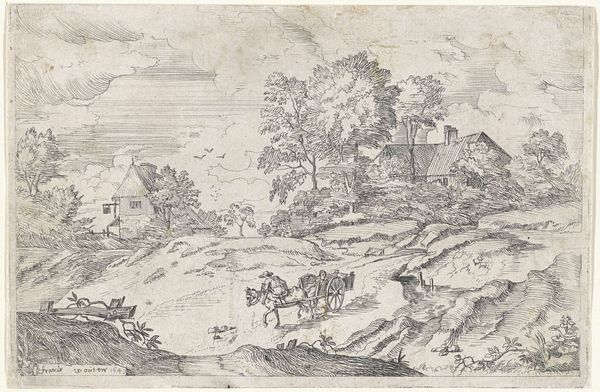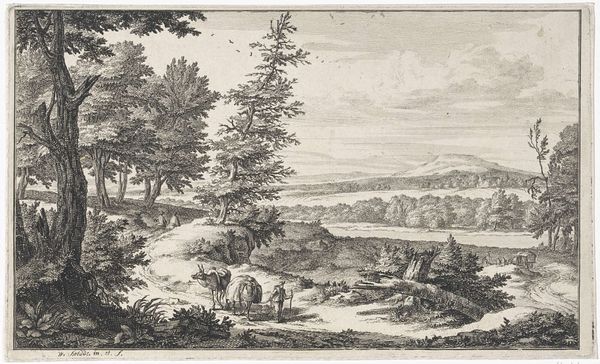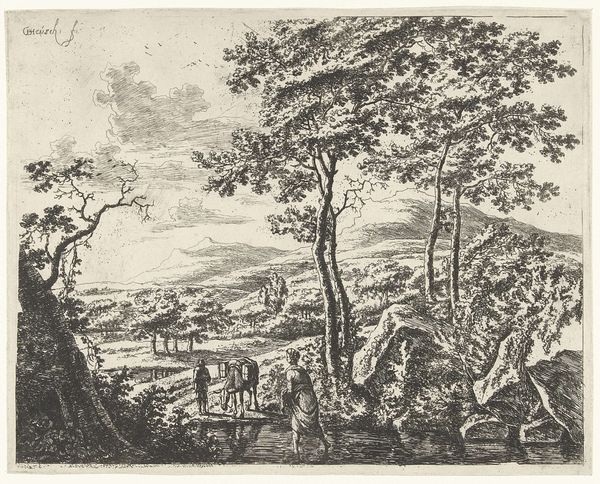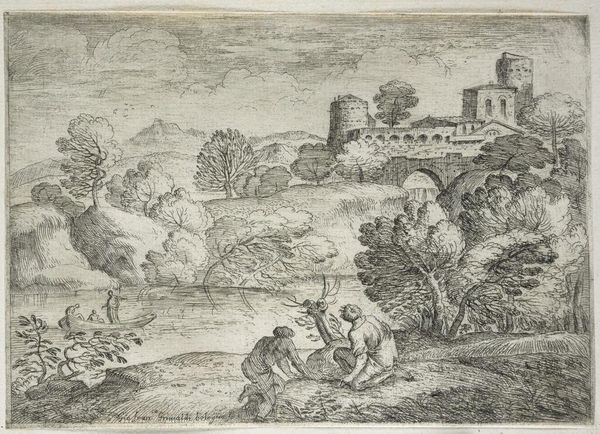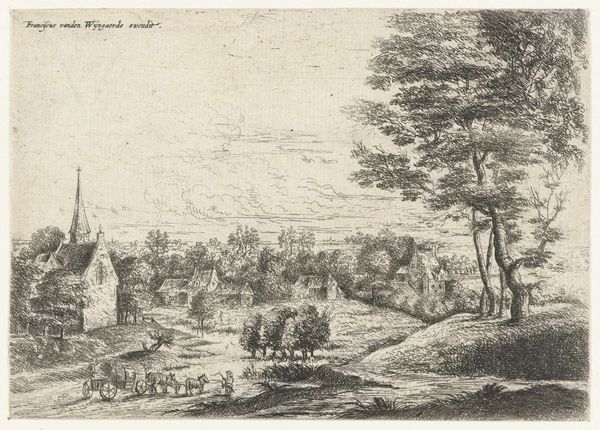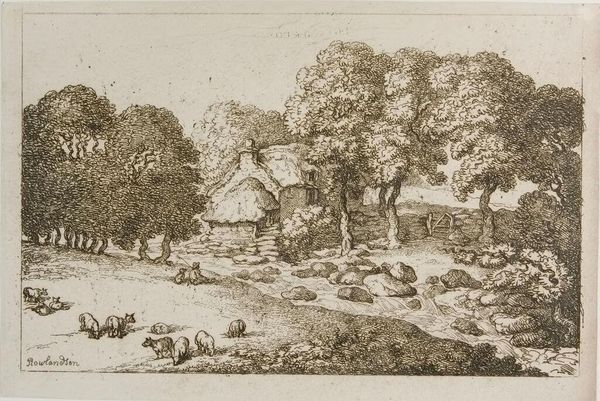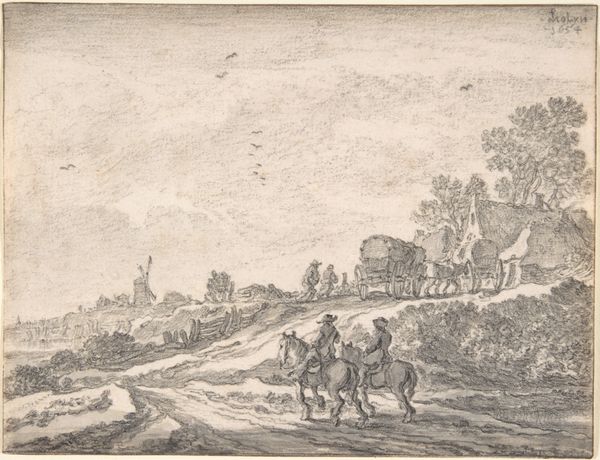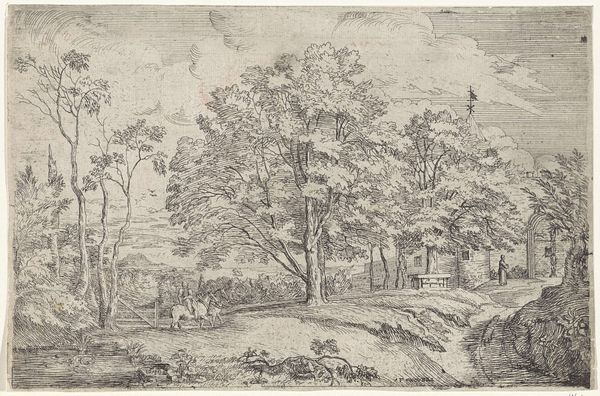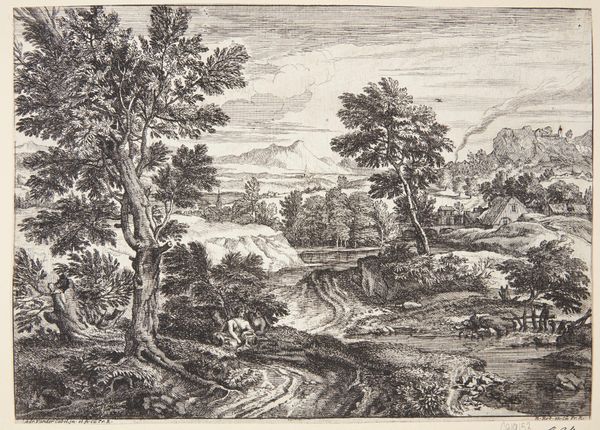
drawing, paper, ink
#
landscape illustration sketch
#
drawing
#
baroque
#
pen drawing
#
dutch-golden-age
#
pen illustration
#
pen sketch
#
landscape
#
paper
#
personal sketchbook
#
ink
#
ink drawing experimentation
#
pen-ink sketch
#
pen work
#
sketchbook drawing
#
genre-painting
#
sketchbook art
#
realism
Dimensions: height 140 mm, width 235 mm
Copyright: Rijks Museum: Open Domain
Curator: Here we have a drawing from 1649 titled "Landschap met een man met twee ezels," or "Landscape with a Man with Two Donkeys," created by Frans Wouters. Editor: It looks like a peaceful snapshot, yet something about the scale seems…off. The landscape dwarfs the human figures. The composition feels serene at first glance, but then you notice how fragile the people and animals seem amidst that immense, untamed world. Curator: Note the artist's remarkable command of line. With ink on paper, Wouters evokes light, texture, and spatial depth. Observe the short, rhythmic strokes defining the foliage, versus the longer, more fluid lines delineating the rolling hills. It demonstrates an exceptional understanding of form through mark-making. Editor: I find the juxtaposition of this serene natural landscape and working-class folks compelling, especially in 17th-century Europe. Who owned land? Who toiled on it? I am drawn to its depiction of ordinary labour, framing workers, human and animal, not in terms of heroism but simply existence. Curator: An interesting point. I am particularly engaged by how the horizon line creates such a dramatic backdrop. Those tiny houses nestled near the shore, ships at sea. Each contributes to an overarching sense of receding distance, and each are equally crucial components of the piece. Editor: To your point, I feel as if that positioning reinforces existing power structures. We are distanced, watching these lives from above, like spectators or even landowners looking at 'our' domain. What agency does that afford them—or us—when interpreting their reality, if their figures and existences become only further dwarfed? Curator: It underscores, I think, a complex dynamic between the subject and landscape. There are many ways this visual experience may be understood. It becomes evident there are social observations happening while also creating something which is visually and materially thought provoking. Editor: Perhaps. Thank you for offering insight on Frans Wouters' technique and understanding. It allows for much reflection and appreciation of its depth within this genre.
Comments
No comments
Be the first to comment and join the conversation on the ultimate creative platform.
